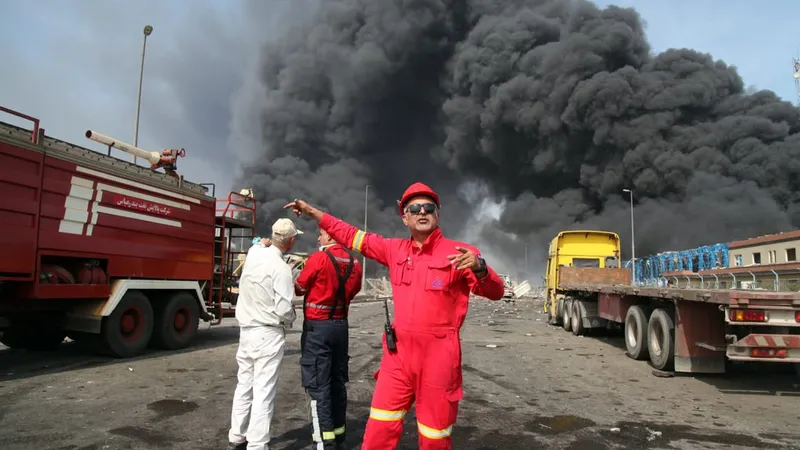BANDAR ABBAS, Iran — A colossal explosion tore through the Shahid Rajaee port in southern Iran on April 26, leaving at least 25 dead and more than 800 wounded, according to state media and emergency officials. The blast, which sent thick black smoke billowing over the Strait of Hormuz, was linked to containers holding chemicals—possibly sodium perchlorate, a key ingredient in solid fuel for ballistic missiles. Fires still raged into Sunday, with helicopters dumping water from above as authorities scrambled to contain the disaster.
The explosion hit just as Iranian and U.S. delegations met in Oman for talks on Tehran’s nuclear program, a coincidence that raised eyebrows but drew no official claims of sabotage. Iranian President Masoud Pezeshkian ordered an immediate investigation, dispatching the interior minister to the scene. State television reported a building collapse caused by the blast, though details remained scarce. The port, Iran’s largest container hub, handles 80 million tons of goods annually, including flammable materials, making it a tinderbox for such a catastrophe.
Witnesses described chaos: a fire sparked in a single container around midday, spreading like wildfire to others. Port workers fled as the blaze roared, and the explosion’s shockwave shattered windows miles away, even rattling Qeshm Island, 16 miles south. Emergency crews rushed in, evacuating trucks and tending to the injured, some of whom were airlifted to Tehran for treatment. The health ministry urged residents to stay indoors, citing toxic pollutants like ammonia and sulfur dioxide in the air. Schools and offices in the region were shuttered Sunday as the province declared three days of mourning.
Iran’s national oil company was quick to clarify that the blast had no connection to its refineries, fuel tanks, or pipelines nearby. A defense ministry spokesman also denied any military materiel was stored at the port. Yet reports from earlier this year noted shipments of Chinese-made chemicals, potentially for missile fuel, arriving at Bandar Abbas in February and March. One maritime risk firm pointed to “improper handling” of these materials as a likely trigger, noting an Iran-flagged ship had offloaded sodium perchlorate at the port just weeks ago.
The death toll climbed steadily through the weekend, with 190 of the roughly 1,000 injured still hospitalized by Sunday. Russia, Iraq, and other nations offered aid, while Iran’s Red Crescent Society worked around the clock. CCTV footage aired on state media showed the fire’s rapid spread, a grim reminder of the 2020 Beirut port explosion that killed over 200. Unlike that disaster, no one in Iran has suggested an attack, though the foreign minister noted security services were on high alert for sabotage.
Shahid Rajaee, located 12 miles west of Bandar Abbas, is a critical artery for Iran’s trade and home to the navy’s main base. A 2020 cyberattack, allegedly by Israel, had previously disrupted the port, but officials dismissed any link to Saturday’s blast. As fires continued to burn, contained to 80% by Sunday, the investigation into the explosion’s cause pressed on, with answers still elusive.

